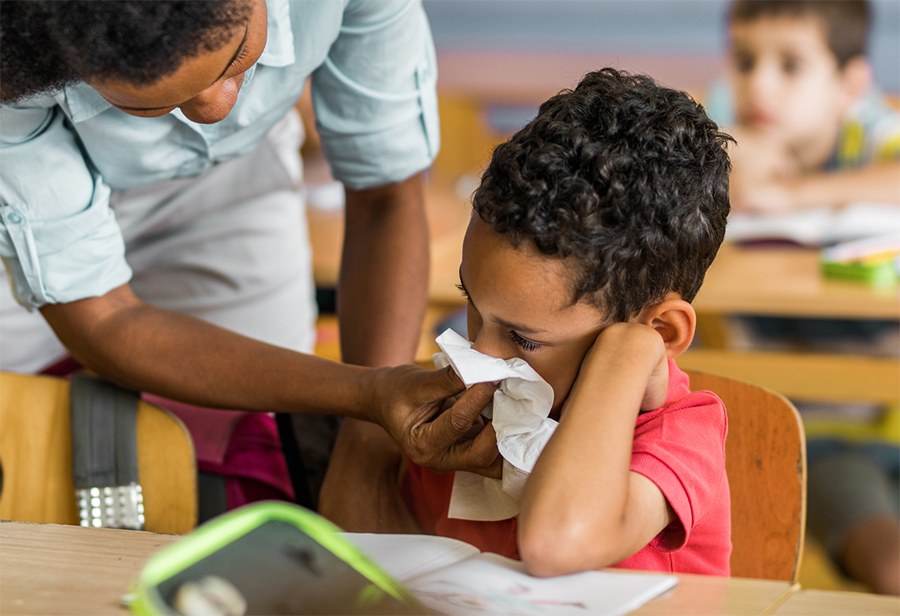Untreated Allergies Could Be Linked to Lower Test Scores—Here’s What Parents Can Do

If your child tends to get a runny nose in the fall, it might be a sign of bigger issues at play. Undiagnosed and uncontrolled allergies cause more than the sniffles—10,000 missed school days each year are attributed to untreated or poorly controlled allergies. And even when students do make it to school, their performance might not be up to par—studies show that students with untreated allergies have lower test scores overall than students without allergies.
Allergens go to school, too.
While children can suffer from allergies in response to allergens in the home all year long, a change in environment or the seasons (like returning to school in the fall) can be a trigger. Even worse, classrooms can be a magnet for allergens—from dust mites to molds, classroom pets, food and even pollen tracked in from recess—so don’t expect things to get better over time. And the negative effects go beyond a runny nose—allergy symptoms can even disrupt children’s sleep patterns, decreasing concentration in class and making academic success seem like a distant dream.
Signs and Symptoms of Allergic Disease
Fortunately, many of the signs and symptoms of some of the most common allergies are not hard to recognize. If what appears to be a cold lasts more than two weeks, it’s probably allergies. Chronic cough, sore throat, a constant headache, watery eyes, sinus infections—they all indicate an underlying condition that goes beyond the common cold. There are also more subtle signs—such as wheezing or getting easily winded, dark circles under the eyes and ear infections—that make allergies even more likely. If your child is exhibiting any of these symptoms, allergies—and a resulting drop in academic performance—may be in the cards.
Don’t play the allergy guessing game.
But there are solutions. While you should avoid the guessing game of standing in the pharmacy mixing and matching pediatric over-the-counter allergy medications—they can cause drowsiness or nervousness without getting rid of the allergies, which could make school even more challenging—you can schedule an appointment with a board-certified allergist to get their advice. They’ll create a personalized treatment plan that fits your child.
Step 1: Know what you are dealing with – identify your child’s triggers
There’s no one-size-fits-all allergy treatment, so the allergist will identify the cause of your child’s allergies with allergy testing. During the 20-minute test without needles, the allergist will apply a minuscule drop of allergen extracts on the skin to determine which ones cause a reaction. Once you know their triggers, the physician can determine the best course of action for your child.
Step 2: Get a personalized treatment plan
An effective treatment plan may be as simple as identifying the best combination of medications for your child, such as an easy-to-use nasal spray with no drowsy or nervous side effects, as well as tips on helping your child avoid their allergy triggers. With the right medication and lifestyle changes, a good treatment plan can reliably limit their allergy symptoms. More often than not, this can all be accomplished in a single appointment, which means your child could be ready for school before the next pop quiz.
For more solutions to your child’s allergy symptoms, or to schedule an appointment, visit allergyandasthmawellness.com or call 1-800-86COUGH. Eight offices are conveniently located in Philadelphia, Jenkintown, King of Prussia, Blue Bell, Doylestown, Lansdale, Collegeville, and Pottstown.
This is a paid partnership between Allergy & Asthma Specialists ℠ and Philadelphia Magazine


